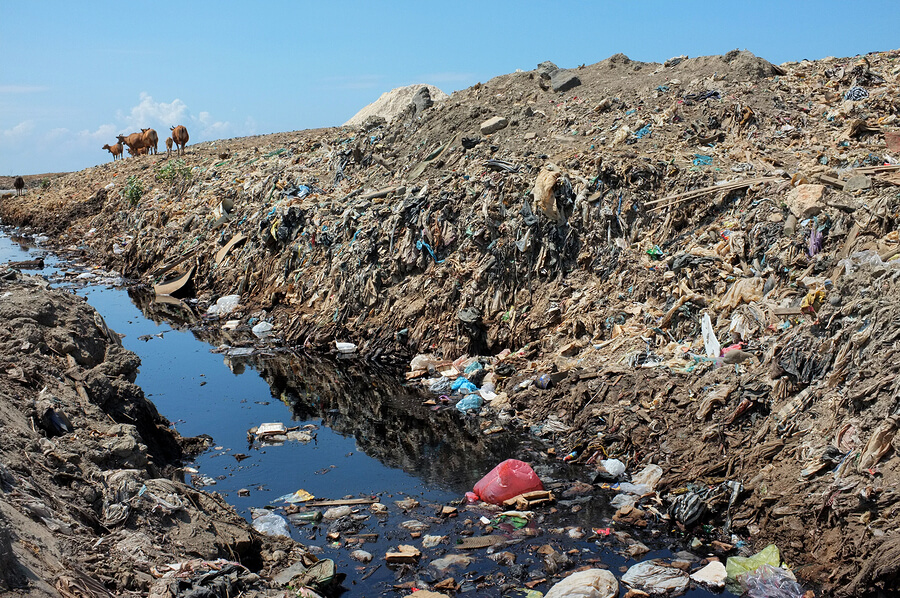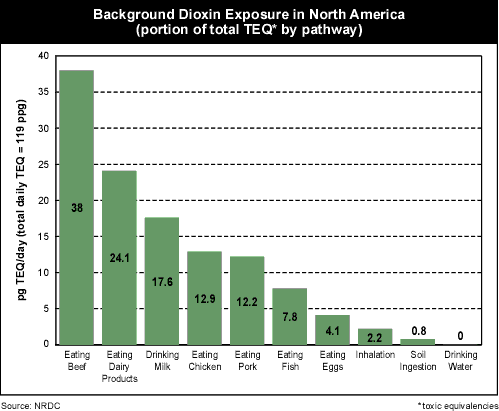Sources of Poisonous Air
The sources of these toxic compounds are air, water and soil. Consequently, their existence in the environment leads them to be found in some food items. Dioxins and furans are major by-products of industrial practices, but are also produced by natural methods, for example, volcanic eruptions and forest fires. Other sources of contamination through dioxins could be the aftermath of manufacturing procedures such as smelting, chlorine, decolourising of paper pulp and the manufacturing of some herbicides and pesticides. Hence, individuals are exposed to dioxins and furans through industrial mishaps, contaminated food, solid waste incineration and road traffic; and these chemicals can be found in the environment across the world.
A herd of cows scavenge for food amid hazardous waste and toxic garbage on highly contaminated land at the biggest and most polluted landfill site on the holiday resort island of Bali Indonesia.
Toxic Effects of Dioxin and Furans
Dioxins and furans are dangerous to the well-being of living beings. These persistent chemicals pose a broad range of adverse reactions. The following are the harmful effects of dioxins and furans on mortals.- Skin lesions, such as chloracne
- Irregular darkening of the skin
- Liver functional issues
- Weakening of the immune system
- Weakening of the endocrine system
- Improper functioning of reproductive system
- Causes problem in development of nervous system
- Leads to cancer

Human beings can be exposed to dioxins and furans through eating contaminated food. Source: NRDC
Prevention is Better than Cure
As suggested, the proper incineration of contaminated chemical materials is the best possible procedure available to prevent and regulate the exposure to dioxins and furans. Another method to control human exposure to dioxins could be by taking strict measures to reduce the development of these toxic chemical compounds. However, this is the responsibility of the National Governments. Furthermore, a very significant cause through which people are exposed to dioxins is food; majorly meat, dairy products, fish, and shellfish. And the ideal way to deal with it is to decrease or remove your consumption of meat and dairy products by adopting a vegan diet. Also, you should avoid burning garbage and wood used in fireplaces or stoves; keep yourself and your family away from passive smoking.Efforts by the Government
Health Canada partakes with other Government of Canada Departments and Agencies, along with the Provinces and Territories have developed Canada-wide regulations and guidelines to screen and eradicate the release of dioxins and furans into the atmosphere through industrial processes.Monitoring
Environment Canada's reference method for sampling semi-volatile compounds in air is commonly known as Modified Method 5 (MM5). The procedures used are detailed in the following reference methods:Sampling
- Reference Method for Source Testing - Measurement of Releases of Selected Semi
- Volatile Organic Compounds from Stationary Sources EPS 1-RM-2 June 1989.
Analytical
- Methodology for Organic Analysis - Environment Canada, December 1989.
- A Method for the Analysis of Polychlorinated Dibenzo-para-Dioxins (PCDD's), Polychlorinated Dibenzofurans (PCDF's),

